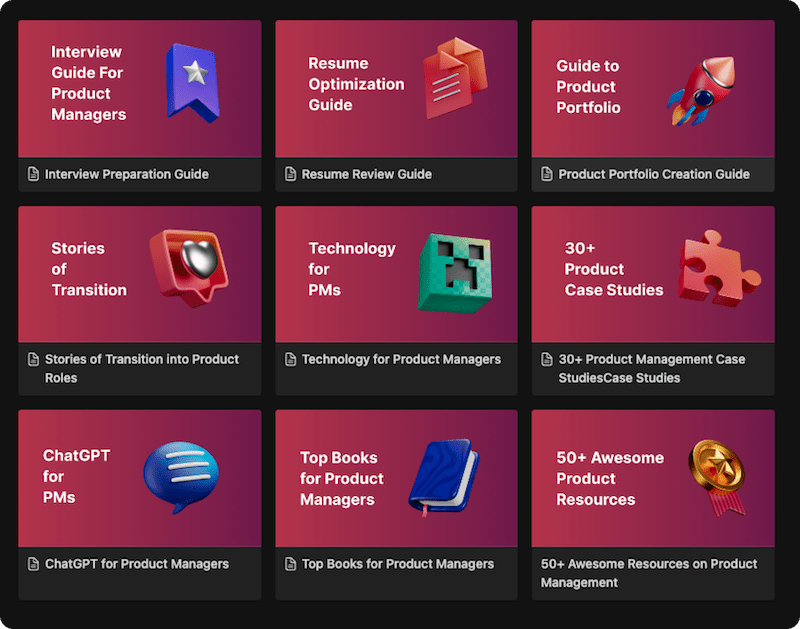Have you ever sat in a meeting with engineers and thought, “Wait… should I already know what an API call is?” If you’re a product manager or aspiring to be one, you’ve probably faced moments where technical jargon flies around the room. You nod along but wonder how much of it you really need to understand.
The good news is: you don’t have to become an engineer. But you do need to speak their language. That’s where Tech for PM (Technology for Product Managers) comes in. It’s about building enough technical fluency to communicate with engineering teams, make informed trade-offs, and drive smarter product decisions.
This guide will take you from beginner to pro level in Tech for PM. We’ll break it down with real-world examples, actionable frameworks, and expert insights so you can confidently walk into any technical conversation without feeling lost.
Why Technical Fluency is a PM’s Superpower
Investing time in your technical understanding isn’t just about “keeping up with the engineers.” It has a direct, tangible impact on your effectiveness and the success of your product.
- Earn Credibility and Trust: When you understand the basics of how your product is built, you earn the respect of your engineering team. This trust is the foundation of a healthy, collaborative relationship.
- Make Better, Faster Decisions: Understanding technical constraints allows you to assess the feasibility of ideas more accurately. You can better grasp why one feature might take two weeks while another, seemingly similar one, might take two months. This leads to better prioritization and a more realistic Product Roadmap.
- Improve Communication: You can translate business requirements into technical needs and technical complexities into business implications. This makes you a more effective hub for Stakeholder Communication, from the C-suite to the development pod.
- Write Stronger Product Specs: A technically fluent PM writes better User Stories and PRD (Product Requirement Document)s. You can anticipate edge cases, dependencies, and technical requirements, which reduces ambiguity and churn for the engineering team.
- Identify New Opportunities: Sometimes, the biggest product innovations come from understanding the capabilities of a new technology. Knowing what’s possible with a new API (Application Programming Interfaces) or a cloud service can unlock new avenues for value creation.
The Tech for PM Learning Roadmap: A Layered Approach
The world of technology can seem overwhelmingly vast. The key is to not learn everything at once, but to understand the core concepts layer by layer, starting from the big picture and progressively getting more specific.
Level 1: The Big Picture – How the Internet Works
Before diving into code or databases, you need a mental model of how a web application works. The most fundamental concept is the Client-Server Model.
- The Client: This is the user’s device and interface—typically their web browser (like Chrome) or a mobile app. When you type a URL, the client sends a “request.”
- The Server: This is a powerful computer that “listens” for requests. It contains the application’s logic (the backend code).
- The Database: This is where all the application’s data is stored (user profiles, product info, etc.). The server retrieves data from and writes data to the database.
The Flow: The Client requests a webpage -> The Server receives the request, runs some code, and fetches the necessary data from the Database -> The Server sends a “response” back to the Client -> The Client’s browser renders the information for you to see. Understanding this basic request-response cycle is the foundation for everything else.
Level 2: The Frontend – What the User Sees and Clicks
The frontend is everything the user directly interacts with. It’s the “Client” side of our model. You don’t need to be a designer, but you should know the three core technologies that build what your users see.
- HTML (HyperText Markup Language): The skeleton of a webpage. It defines the structure and content, like headings, paragraphs, and images.
- CSS (Cascading Style Sheets): The clothing of a webpage. It defines the visual presentation—colors, fonts, and layout.
- JavaScript: The muscles and nervous system of a webpage. It makes the page interactive, allowing for things like pop-ups, form validation, and dynamically loading content without a page refresh.
Why it matters for PMs: Understanding these helps you have better conversations with Product Designers and frontend engineers about the feasibility and effort required for a new User Interface (UI).
Level 3: The Backend – The Engine Room
The backend is the “Server” side of our model. It’s the hidden machinery that does all the heavy lifting.
- Server-Side Languages: This is the code that runs on the server to process business logic. Common languages include Python, Java, Ruby, Node.js, and C#. You don’t need to code in them, but you should know which one your team uses and why.
- Databases: This is where data lives. There are two main types:
- SQL (Relational Databases): Highly structured data, like a set of organized Excel spreadsheets that can be linked together. Think PostgreSQL or MySQL. Learning basic
[SQL for PMs]to query this data is one of the highest-leverage technical skills you can acquire. - NoSQL (Non-relational Databases): More flexible data structures, often used for large-scale applications. Think MongoDB or Cassandra.
- SQL (Relational Databases): Highly structured data, like a set of organized Excel spreadsheets that can be linked together. Think PostgreSQL or MySQL. Learning basic
Level 4: The Communication Layer – APIs
If you learn only one technical concept in depth, make it APIs (Application Programming Interfaces). APIs are the messengers that allow different software systems to talk to each other.
- The Analogy: Think of an API as a waiter in a restaurant. You (the client) don’t go into the kitchen (the server/database) to get your food. You give your order (a request) to the waiter (the API). The waiter takes it to the kitchen, gets your food (the data), and brings it back to you (the response).
- Why they’re critical for PMs: Most modern products are built by integrating various services. Whether you’re adding a Stripe payment gateway, a Google Maps integration, or building a mobile app that talks to your main application, you are using APIs. Understanding how they work is fundamental to Platform Product Management and building interconnected experiences.
Level 5: The Foundation – Cloud Infrastructure
Decades ago, companies had to buy and manage their own physical servers. Today, most companies rent their computing infrastructure from a cloud provider.
- The Big Three: Cloud Infrastructure (AWS, GCP, Azure) are the dominant players.
- The Concept: Instead of owning the kitchen, you’re renting a fully-equipped, scalable kitchen from a massive provider. You only pay for what you use. This allows you to scale up or down instantly.
- Why it matters for PMs: Understanding cloud basics helps you grasp concepts like scalability, reliability, and cost. When engineers talk about services like “S3 for storage” or “EC2 for compute,” you’ll know they are referring to these building blocks.
Level 6: The Process – How It All Gets Built
Finally, you need to understand the process your team uses to build software.
- SDLC (Software Development Life Cycle): The high-level process of planning, creating, testing, and deploying software.
- Agile: The iterative approach most tech teams use. Understand the basics of sprints, stand-ups, and retrospectives. (See our guide on Agile Ceremonies).
- Version Control (Git): A system (most commonly Git) that allows multiple developers to work on the same codebase without overwriting each other’s work. It’s like Google Docs’ “version history” for code.
- CI/CD (Continuous Integration/Continuous Deployment): An automated process for testing and deploying code. This is what allows SaaS companies to do a Feature Release multiple times a day instead of once a year.
PM vs. Technical Product Manager (TPM): What’s the Difference?
It’s important to distinguish between being a “PM with technical skills” and being a “Technical Product Manager.” The TPM is a specialized role.
| Factor | Product Manager (PM) | Technical Product Manager (TPM) |
| Primary Focus | The user and the business (“The Why”) | The technology and the system (“The How”) |
| Core Question | “What problem are we solving for the user?” | “How can we build a scalable and efficient system to solve this problem?” |
| Primary Stakeholders | Business, sales, marketing, users, design | Engineering, architecture, DevOps, other PMs |
| Key Deliverables | PRD, Roadmap, User Stories | Technical specs, API documentation, system diagrams |
| Typical Products | User-facing features, growth experiments | Platforms, APIs, data pipelines, internal tools |
Key Takeaway: All PMs need technical fluency. A TPM is a PM who specializes in a highly technical product where the “user” is often another developer.
Mistakes to Avoid on Your Technical Journey
- Trying to Be a Coder: Your goal is fluency, not to become a junior developer. Don’t get bogged down in learning complex syntax; focus on the concepts.
- Pretending to Know More Than You Do: Engineers will respect curiosity far more than false confidence. It’s powerful to say, “I don’t understand that term, can you explain it to me?”
- Dictating Technical Solutions: Your job is to define the “what” and the “why.” Let your engineering team, the experts, define the “how.”
- Ignoring Technical Debt: Don’t always push for new features at the expense of system health. Understand and respect when your team needs to pause and refactor.
Conclusion
The journey into “Tech for PM” is not a sprint to become an engineer overnight; it’s a marathon of building empathy, understanding, and credibility. It’s about dismantling the wall between “product” and “engineering” and replacing it with a bridge of shared language and mutual respect. Every concept you learn, from the basics of how an API works to the reason your team prioritizes paying down technical debt, makes you a more effective leader. This fluency allows you to participate more fully in the creation of your product, to advocate for your users more intelligently, and to lead your team with greater confidence.
So, embrace your curiosity. Start small. Pick one concept from this guide—perhaps the Client-Server model or APIs—and go a level deeper this week. Ask your tech lead to draw it on a whiteboard for you. View this learning process not as a chore you must complete, but as a powerful, career-long investment in yourself. By building your technical fluency, you are not just becoming a better product manager; you are becoming an indispensable partner in building the future.
FAQ’s
Absolutely not. Many of the best PMs come from diverse backgrounds. A CS degree can give you a head start, but curiosity, empathy, and a willingness to learn are far more important in the long run.
A great starting point is to learn enough HTML and CSS to build a simple webpage, and enough SQL for PMs to answer basic questions about your users. This hands-on experience will make the concepts much more concrete than just reading about them.
If you have to pick one, it’s understanding APIs. The modern digital world is built on interconnected services, and APIs are the glue. Understanding them is fundamental to building almost any new product today.
Be relentlessly curious. Listen more than you talk in technical meetings. Shield the team from distractions. Bring them clear, well-reasoned user problems, not half-baked solutions. And most importantly, celebrate their work and their expertise.
Learn better with active recall quiz
How well do you know What is Tech for PM? Let’s find out with this quick quiz! (just 10 questions)


